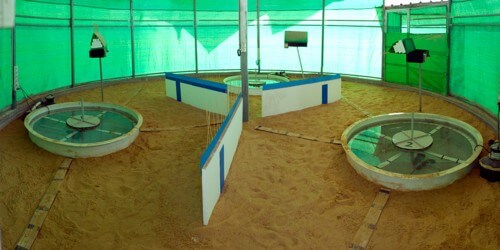Research at Ben Gurion University is trying to examine whether the behaviors that have evolved over many years in natural habitats will allow the transition to life In artificial habitats?

To avoid extinction, animal species have to rely on their abilities to adapt to artificial habitats Man. Will the behaviors that have evolved over many years in natural habitats allow the transition to life In artificial habitats? Will the transition alternative be impossible and the chance of extinction increase?
Researchers from the Department of Life Sciences at Ben-Gurion University, led by Prof. Zvika Abramsky, and with the participation of the student Merav Vecht Katz, Prof. Bret Kotler, Prof. Mike Rosenzweig, from the University of Arizona, Ophir Altstein and Dr. Gandhi Wasserman, tested this question in an artificial habitat with small egrets (as predator) and goldfish (as prey).
Both sexes participated in the behavioral game of predator and prey, in which the successful tactics of one player depend on the behavior of the other player And on the contrary, the goldfish have to find food in a dangerous area of the pond, so they have to solve the dilemma of when to get out from under the protected area and be exposed to the risks of predation. The whites have to adjust their behavior (time spent in each of three possible pools and frequency of returning to it), Depending on the behavior of the fish, in order to maximize the rate of catching fish.
The theory, known as "optimal blackness," predicts the behaviors of both participants in the behavioral game of predator and prey. During the research it became clear that despite the artificial habitat where the experiment took place, the behavior of the herons was in accordance with the quantitative predictions of the model The behavior of the fish, at least qualitatively, also matched the model's predictions. Therefore, the natural selection that these species underwent during evolution in natural habitats and the adaptations that they acquired, prepared them to deal successfully also with the artificial habitat of the experiment.
The research findings were published this month in The American Naturalist, which is considered one of the most prestigious journals in the field of evolutionary biology and ecology.
Caption for the photo:

One response
Enlarged image:
https://www.hayadan.org.il/images/content3/2013/03/Abramsky-experiment-500×250.jpg